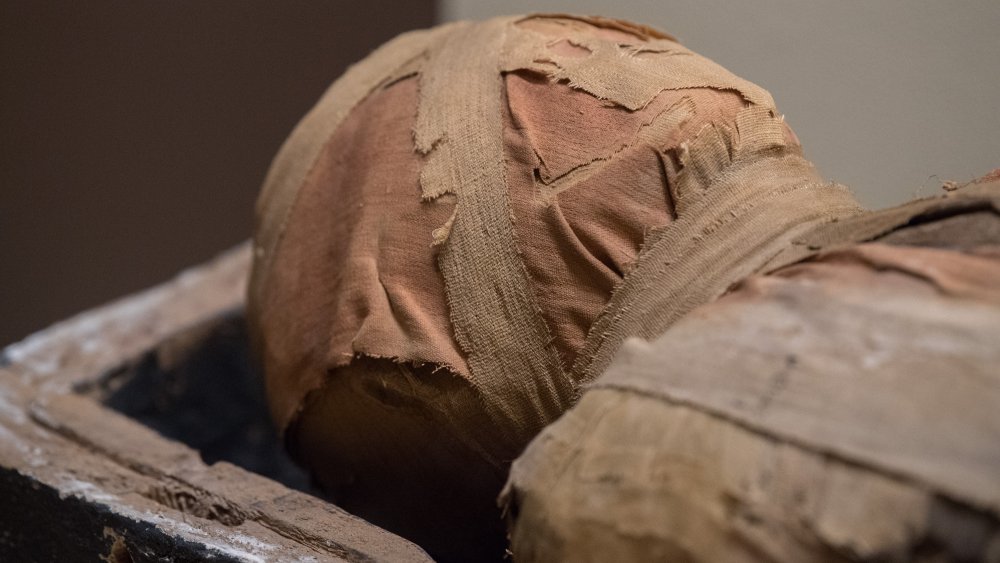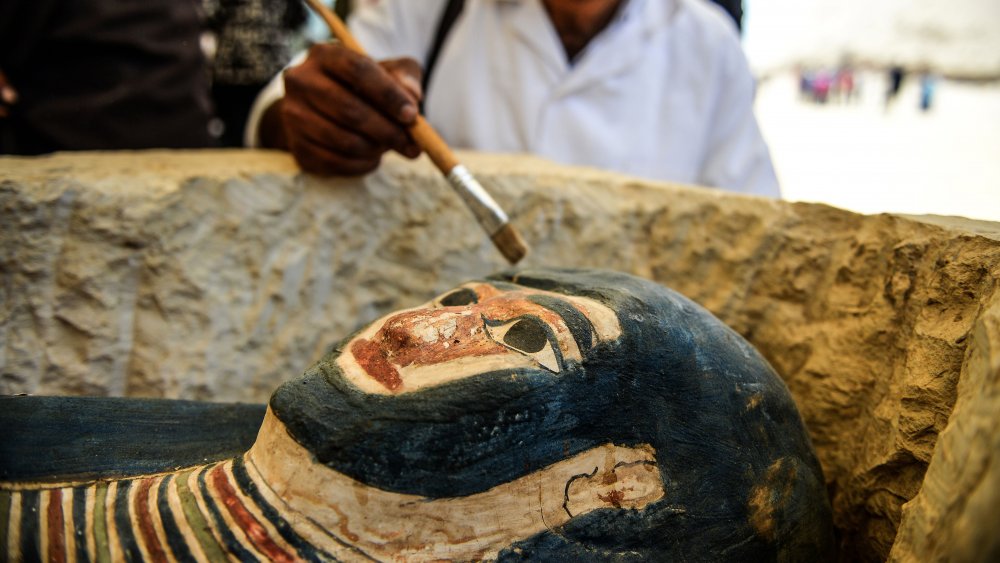Ancient Egyptian Burial Found With Bizarre Hieroglyphs
Ancient Egyptian society is profoundly fascinating. For a civilization thousands of years old, they were incredibly advanced in both their culture and the technologies at their disposal.
And for all we know about Egyptian language, religion and buildings, we're uncovering new stuff all the time, or puzzling over things we've found. Heck, we're still just trying to figure out what's inside the Great Pyramid.
One reason we know so much, though, is that we have a deep understanding of their language, thanks to the good old Rosetta Stone — the original one that unlocked the key to understanding hieroglyphics, and not the program that you stopped using after a week of trying to learn Spanish.
Thanks to what we know, we can analyze new discoveries and speak with some authority on what they might mean. Science Alert has reported the discovery of a 2,000 year old burial site with dozens of mummies near Saqqara in Egypt, long known as a "city of the dead." But these mummies are different from what we usually expect to find at a burial site, and are shedding new light on ancient Egyptian customs.
Mummy by a dummy?
Burial sites are generally reserved for the wealthy and the highly respected, with elaborately decorated sarcophagi and tombs full of riches to accompany the mummy in the afterlife.
The recently discovered mummies, however, are decidedly middle-class, with burials described as "minimal, even clumsy."
"They were only subjected to basic embalming treatments, wrapped in bandages and placed directly in pits dug in the sand," Egyptologist Kamil Kuraszkiewicz of the University of Warsaw told the Polish Press Agency earlier this year.
Kuraszkiewicz believes that whoever painted the hieroglyphs on the tomb couldn't read, describing them as "beautifully clumsy." Usually Anubis, the dog-headed guardian of the underworld is painted in black, but on these, he was painted blue amidst a jumble of nonsensical hieroglyphs, suggesting that the painter was copying something they had seen in more elaborate burial rituals without fully understanding it.
These "imitation" burials, executed with less skill than would be reserved for the rich, tell us more about levels of stratification within Egyptian society, and shed more light on the lives of the commoner in Egypt, and what they believed.

